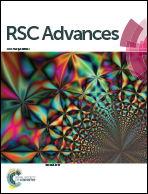Application of titanium sulfate in a coagulation–ultrafiltration process: a comparison with aluminum sulfate and ferric sulfate
Abstract
This study focused on the floc characteristics and membrane fouling of Al2(SO4)3 (AS), Fe2(SO4)3 (FS) and Ti(SO4)2 (TS) in a coagulation–ultrafiltration (C–UF) process. Floc properties, including floc size, floc strength, recovery ability and structure, which would significantly affect membrane fouling, were analyzed. The effect of the solution pH on the floc properties and membrane fouling was also considered. The results showed that TS flocs with a compact structure, high strength and large size achieved the lowest extent of membrane fouling among these three coagulants. In addition, the floc properties and membrane fouling were also affected by the initial solution pH. TS formed the smallest and weakest flocs with an intermediate fractal dimension (Df) value when the pH was 5, whereas TS formed medium-sized flocs with a compact structure at a pH of 7 and a pH of 9. Nevertheless, TS coagulation systems led to the least decrease in permeate flux under acidic, neutral and basic conditions in the ultrafiltration process, and the most obvious decline in permeate flux was caused by coagulation with FS. In addition, the results also indicated that the membrane fouling of the AS, FS and TS systems was the slightest at pH 7.


 Please wait while we load your content...
Please wait while we load your content...